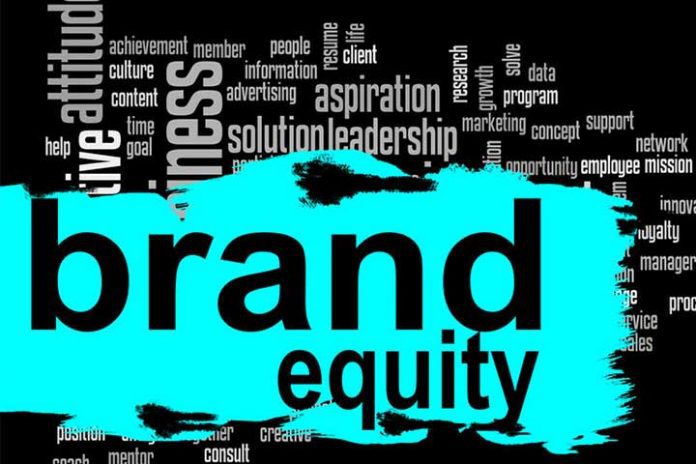The concept of brand equity is relatively modern, and although it translates as brand equity, it refers to the value perceived by the public. Therefore, it is not an economic value but a perceptual one, although logically, one thing conditions the other. To understand its nature, we can say that this perceived value is generated from the opinions, emotions and experiences that the different public of interest feel as a result of the interactions they have with all forms of manifestation of a company, as well as the relationships that they end up building.
If it is positive, this perceived value generates better financial results and enhances the business. The reputational crises that companies such as BP, Goldman Sachs, Volkswagen, Toyota, etc., have had. They destroy perceived value and economic equity as well.
Thus, brand equity or brand capital is understood to be the sum of the tangible and intangible attributes associated with a brand and make it preferred and superior enough to ask for a higher price for it.
What is the brand capital made?
As a result of this definition, its composition is better understood and, therefore, its metrics to monitor it properly, since its capacity to generate income and economic value can be enormous.
The brand equity is made up of
- Brand awareness: that the brand is in the minds of the public. It is one of the indicators of their stature or size, recognition and degree of familiarity, relevance and capacity for influence. The degree of memory is built from an identity, having a presence at the time of purchase, and attractive, timely and effective communication, among other factors.
- Perceived quality (the degree of perceived satisfaction), at three levels: of the product and service and organization, resulting from their interactions and experiences. Without an acceptable level of quality, there is no possible relationship. In the case of organizations, it also includes the leadership capacity of the organization.
- Perceived benefits: having a differentiated and superior product in perceived benefits makes a purchase reason evident compared to others, allowing even a higher price ( price premium ) than others.
- Profile / Perceived Associations: an image and personality that can attract, connect and generate appreciation and generally favorable feelings towards the brand. Its possibility of extension to new products, targets, uses, markets or marketing channels also influences.
- Loyalty: materializes the degree of adhesion, emotional fit and satisfaction towards a brand by knowing how to keep its promises fulfilled over time through satisfactory and meaningful experiences, generating repeat purchases. This medium reduces the risks of change towards other competitors, stabilizes returns, and reduces reputational risks and marketing costs.
- Other competitiveness factors: these are competitiveness factors derived from the organization itself, its ecosystem, type of leadership, privileges or particular advantages that can be applied to or benefit the brand. For example, exclusives, appellations of origin, cost structures, linkages, licenses or the like.
By acting carefully and professionally on these indicators and activating them appropriately, we can build equity for our brand, in short, powerful, profitable and sustainable brands for the future.
The importance of brand equity
Due to the nature, quantity, and variety of the concepts, it includes the impacts and consequences on the operation and the capacity to generate and convert a business. The advantages of having solid and robust brand equity can be very significant for growth—profitability and value for organizations.
In addition to the enormous strategic importance and the competitive advantage that it implies, if we look at the aspects of which it is composed, we will see that it summarizes the brand’s ability to attract and generate more demand, via current users, new users, more frequency, new opportunities, new markets and at a higher price.
That is why it is so appreciated and valued by CEOs, investors and savvy financiers, and it is an essential element in the financial-economic valuation exercises of a brand. Likewise, its accurate and necessary monitoring allows better measurement of returns and budget allocations to these brands.
How is brand equity measured?
To measure brand equity, we must look for the precise and most concrete and measurable indicators possible concerning the six aspects listed above. If you also want to link to market metrics or results (market share) or business (income, results ), you can have quantitative market metrics, as well as qualitative (perceptions). But, in any case, both can be integrated as a dashboard in a consolidated control panel that will make its management more intuitive and practical.
In any case, it will be essential:
- Identify the specific indicators (KPIs ) that must be applied in each case to each of the components of brand equity and have them correctly measured and available.
- Homogenize the indicators to be comparable and aggregated, if necessary, even though an index system (base 100).
Consider and incorporate metrics line on and offline, or necessary depending on the nature of the marks to be measured.
Being guided by brand equity allows the sustained creation of value for brands and organizations. It was the first economic concept that explained, back in the 80s, the ability of brands to generate business as an asset. Its correct management is a competitive weapon of the first order compared to other brands due to its ability to demonstrate (even quantitatively) the power of one brand over others. Therefore, it is a crucial tool for brand management, so it is increasingly present in companies’ long-term marketing and business strategies.

